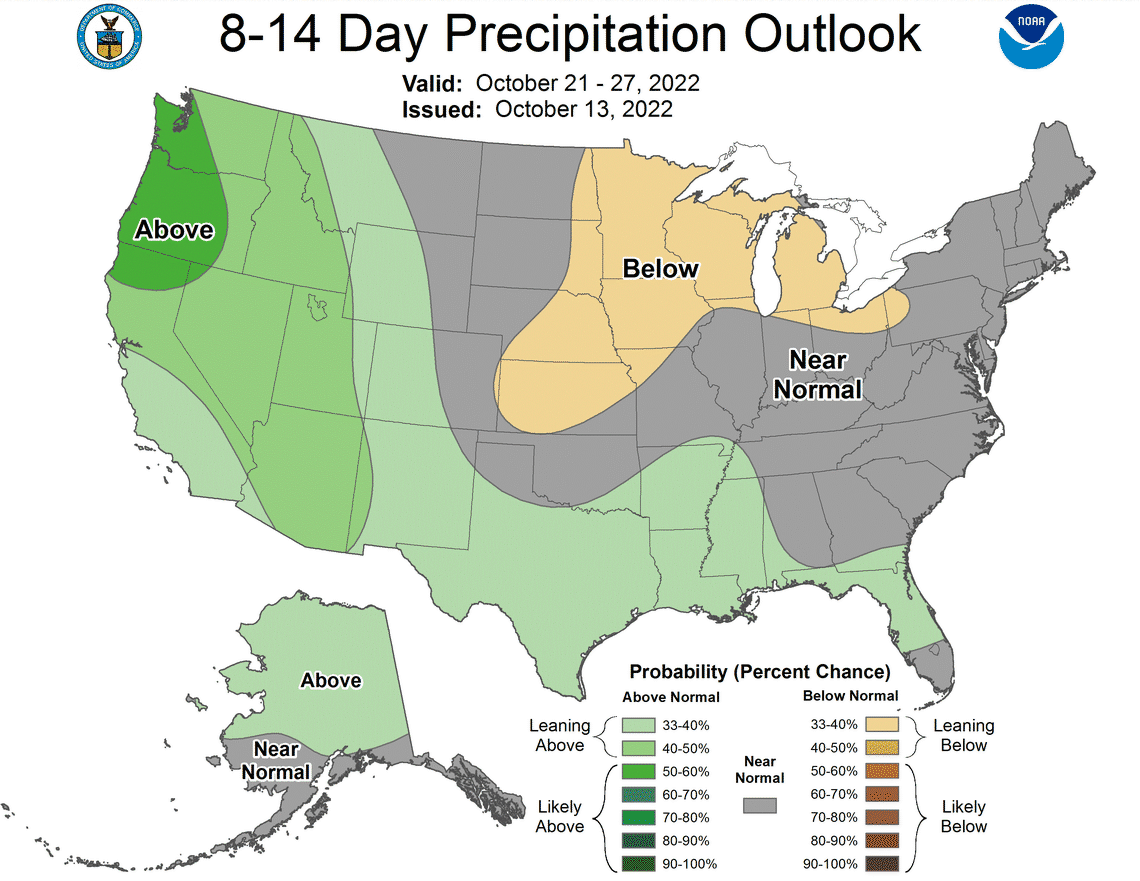Remember rain? This unique weather pattern is keeping Boise dry, it could be here to stay
Have you noticed that it seems particularly dry in Boise lately? You wouldn’t be wrong.
It’s been almost a month since Boise last had measurable precipitation. The last time that Boise saw rain was on Sept. 21, and it’ll be awhile until it returns.
“For the next seven days, we do not have any precipitation in the forecast,” Bill Wojcik, lead forecaster for the National Weather Service in Boise, told the Idaho Statesman on Thursday.
Pacific Northwest residents can expect the earliest chance for rainfall to be on Oct. 21, which is when Boise can also expect some precipitation, Wojcik said.
Although the Weather Service does not forecast further out than a week, Wojcik said that the Climate Prediction Center indicates an above-average chance for the region to see precipitation between Oct. 21 and 27.
“That’s kind of a leaning above-probability chance to get some precipitation,” Wojcik said. “It doesn’t mean we will get a lot; we may get a little, we may get nothing, it’s just the chances of getting something have improved.”

Boise may face one of the driest Octobers on record. But it won’t be alone.
Since 1865, Boise has endured a dry October on three occasions — 1869, 1895 and 1988. The city has also seen five Octobers with a trace amount of rain, which is an indication that rain occurred but was not measurable.
Why is it so dry?
Dry weather has been a topic on a regular basis in recent months. But the current meteorological setup is significant because of its longevity.
There is currently a pair of high-pressure systems affecting Boise — one off the Washington coast and another in Montana. High-pressure systems produce clear skies and typically warmer weather.
With these two high-pressure systems sitting in place, westerly winds that would push storms toward Boise instead are diverted up into Canada. Westerly winds blow from the West and only occur in between 30 and 60 degrees latitude, which encompasses most of the U.S.
But there’s also a low-pressure system sitting over northern California — south of the high-pressure system off the coast of Washington — making this current weather pattern so significant.
The occurrence of two opposite pressure systems sitting north and south of one another creates something called a Rex block, Wojcik said, or a blocking pattern.
High pressure will dominate our region for the next week, blocking Pacific storms from moving into the West, resulting in sunny days & clear nights with above-average temperatures for the next week. https://t.co/QVszQmQPgW #idwx pic.twitter.com/eDn9hVa7c2
— KTVB.COM (@KTVB) October 13, 2022
“It typically lasts for quite a long time,” Wojcik said. “And then eventually the pattern breaks down, the high will weaken, westerlies will break through, and we start getting these systems coming off the Pacific.”
Wojcik couldn’t say with certainty that the Rex block would break down anytime soon, but once it does, Boise could see a couple of weeks of active weather heading into October.
Remember the drought?
Earlier in the year, there was a considerable emphasis on drought throughout Idaho. A dry winter last year resulted in a reduction in snowpack across the state, resulting in a tight water year for the Gem State.
A historically hot summer didn’t help matters, and the whole state remains in some level of drought. Boise, and much of Central Idaho, are in a moderate drought, the second-lowest level of severeness on the National Integrated Drought Information System. Areas south of Ada County, such as Owyhee and Twin Falls counties, are in severe to extreme drought.
Wojcik doesn’t expect Ada County to climb back into severe drought — the third level of severeness — because October is usually relatively dry. Boise averages 0.82 inches of precipitation in October.
“But if we go dry to the end of the year, especially if we get into December, I can see that jumping up to severe,” Wojcik said.
Fortunately for Idaho, the region is expected to head into a La Niña winter, which typically results in below-average temperatures and above-average precipitation.
